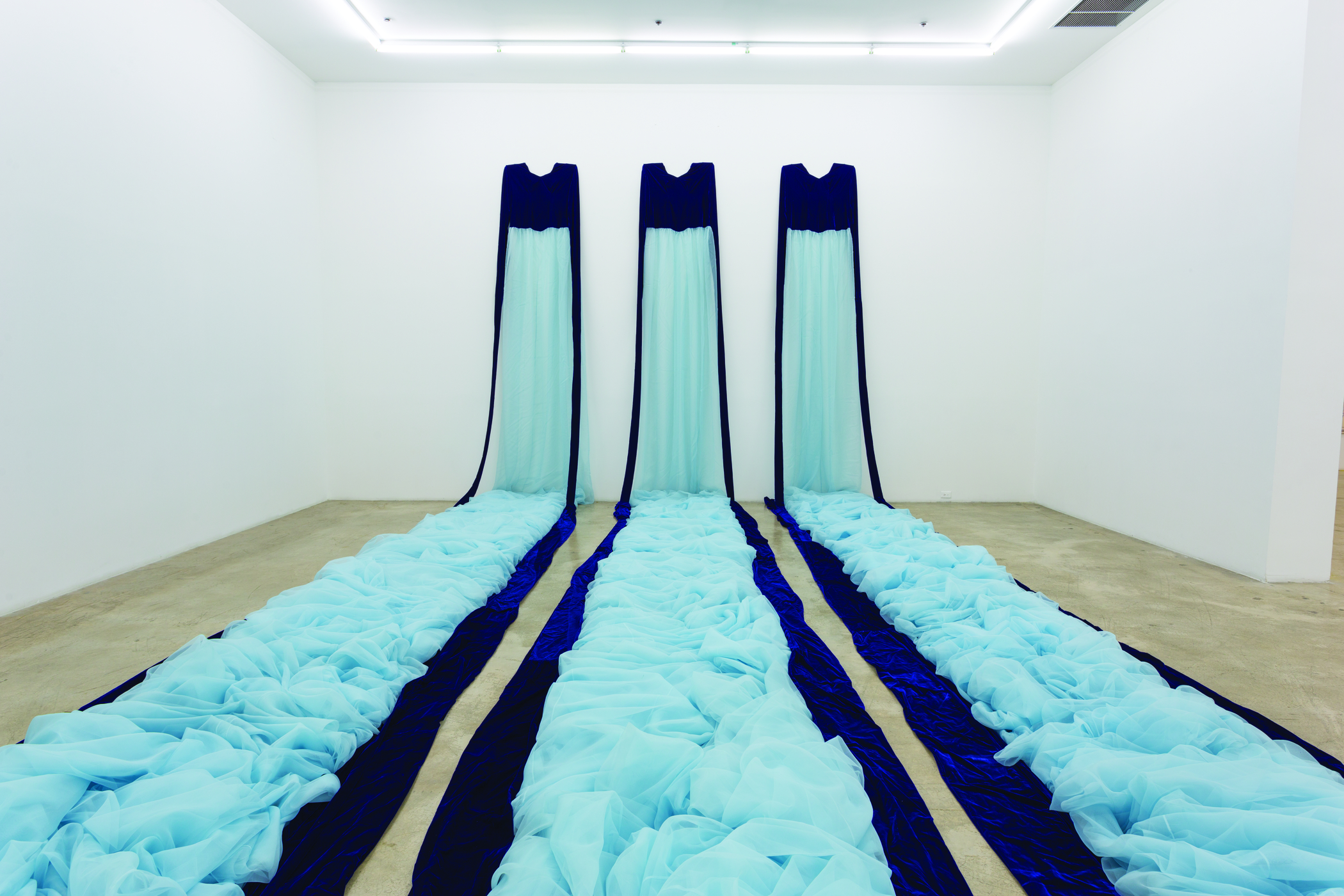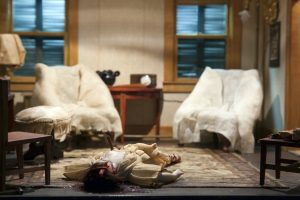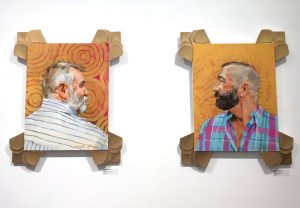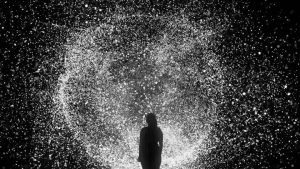What does it mean to bring to life the suppressed truths of human nature and force them to the forefront of perception? The effect is unsettling, inspiring. The 16 female artists featured in REVIVAL forge their interpretations of human conflicts, standards of beauty, and conventional femininity through mixed media sculpture and photography. The exhibition, which will remain on display at the National Museum for Women in the Arts (NMWA) through Sept. 10, does not disappoint.
The artists of REVIVAL combine traditional objects of beauty and comfort with inescapable, dark human desires and conflicting emotions. Familiar subjects—clothing, images, faces—are juxtaposed with the social connotations of their existence. The striking and often unsettling imagery blurs the line between the dreamlike semi-familiar and the commonly suppressed essence of the human condition. At the entrance, artists Maria Marshall, Anna Gaskell, and Bettina von Zwehl portray children exhibiting actions and emotions typically reserved for adulthood. Later, human and animal bodies are confined by entrapping adornments or merged with symbolic mutations.
Marshall’s 19-second looping video, titled When I Grow Up, I Want to Be a Cooker, details a 2-year-old boy puffing on a cigarette. The video zooms intermittently onto striking aspects: the tendrils of smoke emerging from his infant mouth, his soft features brushed by the toxic clouds, the childish gaze over practiced smoke rings. At the end of the video, the smoke expands into a whitening screen, engulfing the image of the toddler. The production emphasizes Marshall’s overwhelming anxiety that her children would succumb to an addiction or harmful behaviors, as the video ties the reality to the speculative possibility.
Gaskell highlights another dilemma of childhood in her override series by evoking fantasy and the dual nature of humanity through chromogenic photographs, printed by replacing silver images with colored dye. Young girls in matching outfits appear in ethereal, vibrant natural landscapes. The varied sizes of the images evoke the metamorphosis of Alice during her adventures in Wonderland and the shapeshifting phases of childhood. In contrast to the bright atmosphere, the young girls’ faces are often masked by shadows. Sometimes, the girls appear spiteful, as though vengefully scheming. In override, Gaskell indulges in a harsh denial of the delusion that there exists a truly innocent time in life, free from such conflicting desires.
However, a later display argues that there is no reason to be shocked by these emotional conflicts in children. German artist von Zwehl asserts through her series of photographic portraits of children that her subjects are intellectual, individual beings, just as adults are—not objects to be coddled and preserved. Each child poses independently with a minimal, grey background; their faces are solemn as they pose like experienced adults.
REVIVAL also confronts concepts of the body, beauty, and femininity, utilizing unconventional materials—from human hair to taxidermy—to unnerve viewers. The artists assert the confining nature of conventional beauty. Portuguese native Joana Vasconcelos envelopes sculptures of animals and insects with an intricately crocheted lace: beautiful adornments that entrap the creatures and restrict their nature. Cathy de Monchaux displays such evils through a Victorian lace collar armed with subtly deadly, inward-facing metal spikes and an elaborate, spiked belt that boldly asserts its title message, “Don’t Touch My Waist.” Alison Saar’s sculpture “Tippy Toes” suspends a female figure within a delicate crinoline composed of thorny branches, elevating the woman to an empowering height with the sacrifice of her freedom. Her hands beckon the viewer, an ironic portrayal of the temptation to conform to conventional standards of femininity.
REVIVAL is intriguingly difficult to observe, yet impossible to turn away from. The exhibit forces one to face what most would rather avoid, spurring a recognition of one’s own duplicity in choosing to navigate life by partaking in comforts and avoiding the darker corners of our nature. By initially disorienting and upsetting audiences, artists begin to pull the female figure from the grasps of sexual connotation, investigate the human condition of conflicting goals and blurry morality, and, with a punch, awaken audiences to a truth far beyond the easily digestible. The most shocking twist of all may be its unexpectedly peaceful closure.
In the final exhibition room, three swaths of pale blue chiffon cascade down the walls and across the floor, bordered by cobalt crushed velvet. Tracing the silken waterfalls to their source reveals that these apparently natural structures are in fact the trains of long, cumbersome dresses: Beverly Semmes’s Blue Gowns. Although Semmes, a native of D.C., understands that her work is commonly interpreted as a feminist critique of ties among fashion, women, and sewing, she insists that her work focuses on the relationship of the body and the natural landscape, according to the NMWA.
In this way, the placid piece straddles the same line as the gut-wrenching works of Saar. It balances the duality of an empowering burden, whether it be beauty, or society, or femininity, or the question of our own identity as human beings. In this final interpretation, we are exactly as we appear to be: dynamic manifestations of our own Mother Earth.





